Art history in contemporary life
Alexey Kondakov takes figures from classical paintings, places them in contemporary scenes, and posts the results on Facebook. Think of cherubs riding the subway, that sort of thing.
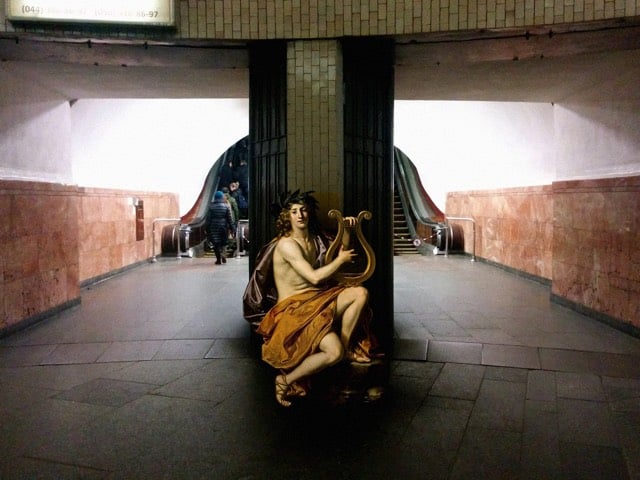
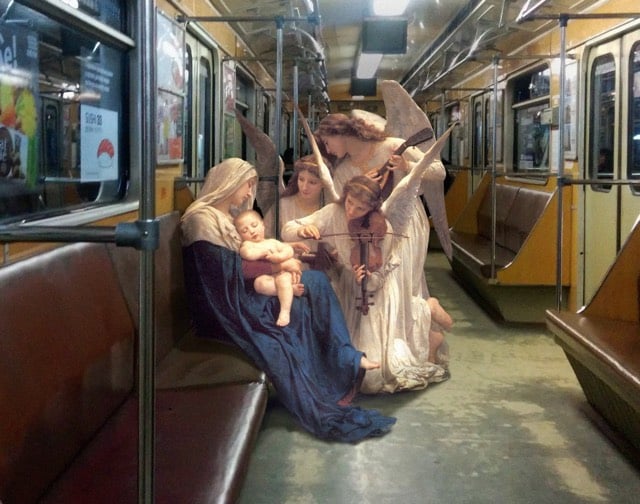
(via colossal)



This site is made possible by member support. 💞
Big thanks to Arcustech for hosting the site and offering amazing tech support.
When you buy through links on kottke.org, I may earn an affiliate commission. Thanks for supporting the site!
kottke.org. home of fine hypertext products since 1998.
Alexey Kondakov takes figures from classical paintings, places them in contemporary scenes, and posts the results on Facebook. Think of cherubs riding the subway, that sort of thing.


(via colossal)
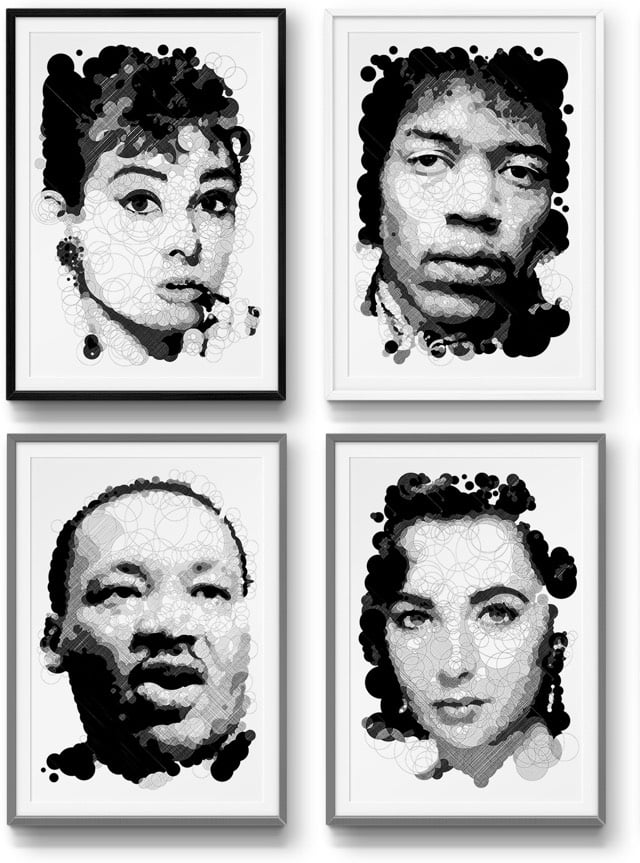
This looks cool…Thomas Pavitte has reinvented the paint-by-numbers with Querkles. Instead of simple numbered areas to fill in, Querkles cleverly uses overlapping circles that you fill in with different shading techniques or colors to reveal hidden faces. Here’s a short demo of how it works:
Pavitte has two different books available: Querkles and Querkles Masterpiece, featuring famous faces from the art world. See also coloring books for adults.
The NY Times has a short documentary on Chris Burden’s Shoot, a conceptual art piece from 1971 in which Burden is shot in the arm by a friend.
Burden passed away earlier this month. (via digg)
For his project Trophy Scarves, artist Nate Hill photographed himself “[wearing] white women for status and power”.

Hill says “it’s a satire on black men who like to see white women as status symbols”. NSFW (some nudity)…or you can view censored pics on Instagram.
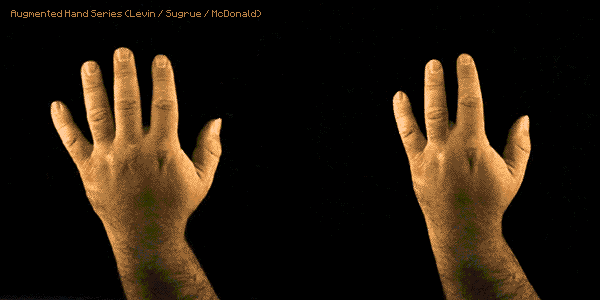
Augmented Hand Series is an interactive software system created by Golan Levin, Chris Sugrue, and Kyle McDonald. You stick your hand in and on the screen you see your hand with an extra thumb, one fewer knuckle in each finger, fingers with springs in them, variable sized fingers, and the ultra freaky Breathing Palm.
(via prosthetic knowledge)
Artist JK Keller has digitally widened1 episodes of The Simpsons and Seinfeld to fit a 16:9 HD aspect ratio. Watching the altered scenes is trippy…the characters and their surroundings randomly expand and contract as the scenes play out.
Keller also HD-ified an episode of the X-Files and slimmed an old episode of Star Trek into a vertical aspect ratio. (via @frank_chimero)
At least I think that’s how they were created. The videos were posted without explanation — aside from their titles “LEaKeD TesT footagE frOM seiNfelD RemaSter In hiGh-defiNiTiON” and “animAtORs rEdraw old SimPsons epIsodeS fOr hdTv” — so it’s hard to say for sure.↩
Using professional-grade visual effects combo Arnold and Maya, Lee Griggs makes art. Like these Deformations:
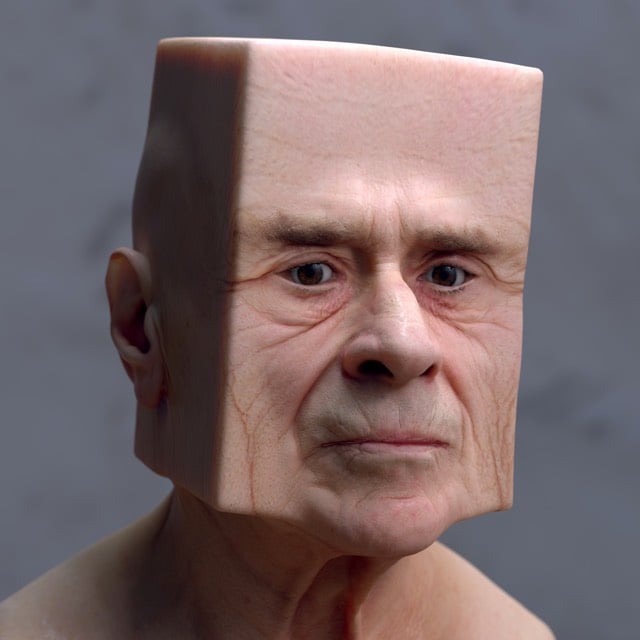
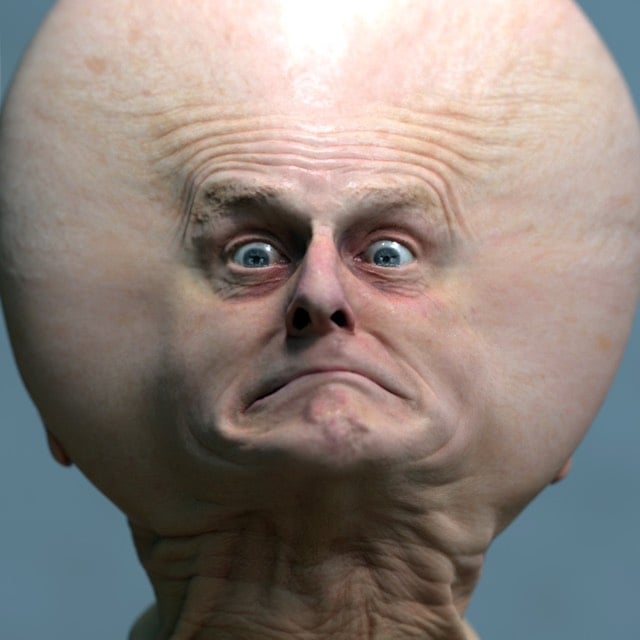
And Abstract Portraits:
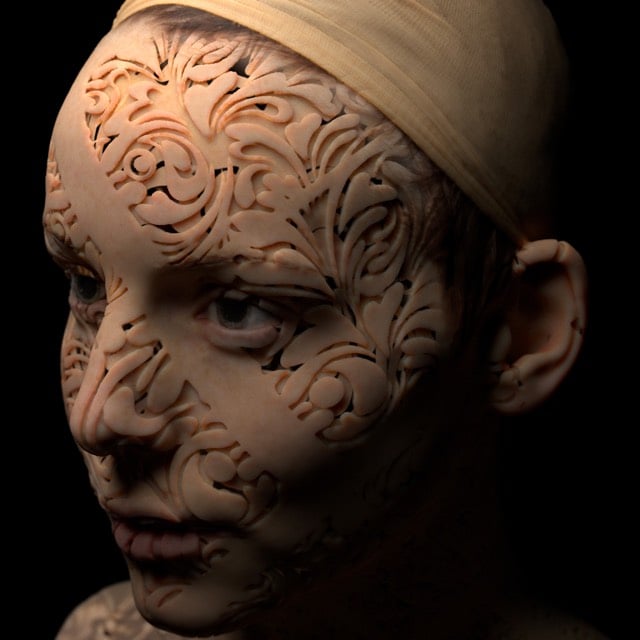
(via ignant)

Ben Fino-Radin of MoMA’s Department of Conservation wrote a brief post about how the museum manages their digital artworks, including a bit about how they think about futureproofing the collection.
The packager addresses the most fundamental challenge in digital preservation: all digital files are encoded. They require special tools in order to be understood as anything more than a pile of bits and bytes. Just as a VHS tape is useless without a VCR, a digital video file is useless without some kind of software that understands how to interpret and play it, or tell you something about its contents. At least with a VHS tape you can hold it in your hand and say, “Hey, this looks like a VHS tape and it probably has an analog video signal recorded on it.” But there is essentially nothing about a QuickTime .MOV file that says, “Hello, I am a video file! You should use this sort of software to view me.” We rely on specially designed software-be it an operating system or something more specialized-to tell us these things. The problem is that these tools may not always be around, or may not always understand all formats the way they do today. This means that even if we manage to keep a perfect copy of a video file for 100 years, no one may be able to understand that it’s a video file, let alone what to do with it. To avoid this scenario, the “packager” — free, open-source software called Archivematica — analyzes all digital collections materials as they arrive, and records the results in an obsolescence-proof text format that is packaged and stored with the materials themselves. We call this an “archival information package.”
This collection of prints produced by artists about the Sino-Japanese War and housed in The British Library is great, but this particular print is just beyond:

From Evan Puschak, aka The Nerdwriter, comes an entertaining analysis of Jacques-Louis David’s neoclassical masterpiece, The Death of Socrates.
The Death of Socrates is on display at the Met here in NYC. From the Met’s catalogue entry:
In 399 B.C., having been accused by the Athenian government of impiety and of corrupting young people with his teachings, the philosopher Socrates was tried, found guilty, and offered the choice of renouncing his beliefs or drinking the cup of hemlock. He died willingly for the principles he held dear. Here he gestures toward the cup, points toward the heavens, and discourses on the immortality of the soul. The picture, with its stoic theme, has been described as David’s most perfect neoclassical statement.
The artist consulted Plato’s “Phaedo” and a variety of sources including Diderot’s treatise on dramatic poetry and works by the poet André Chenier. The pose of Plato, the figure seated in profile at the foot of the bed (who was not actually present at the scene), was reportedly inspired by the English novelist Richardson. The printmaker and publisher John Boydell, writing to Sir Joshua Reynolds, called The Death of Socrates “the greatest effort of art since the Sistine Chapel and the stanze of Raphael,” further observing that the painting “would have done honour to Athens at the time of Pericles.”
Here’s a bigger view of the painting, which you’ll want to pore over once you’ve watched the video. (via ★interesting)
I really love this video featuring the opening and closing shots of fifty-five movies presented side-by-side, “First and Final Frames.” Created by Jacob T. Swinney.
My favorites: “Tree of Life,” “Raging Bull,” “Melancholia.”
Update: Swinney has released a second installment of First and Final Frames.
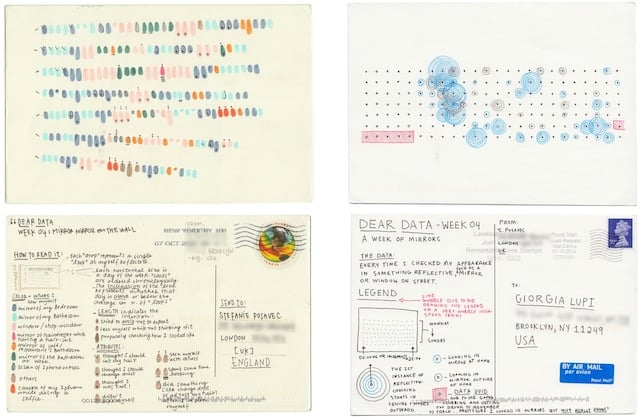
Giorgia Lupi, who lives in New York, and Stefanie Posavec, who lives in London, are engaged in a long-distance, postcard-based data exchange in order to get to know each other better: “Dear Data.” They’ve only met in person twice, and they’re both interested in data, so they’re sending each other postcard drawings of data about their day-to-day lives.
Each week we collect and measure a particular type of data about our lives, use this data to make a drawing on a postcard-sized sheet of paper, and then drop the postcard in an English “postbox” (Stefanie) or an American “mailbox” (Giorgia)!
Eventually, the postcard arrives at the other person’s address with all the scuff marks of its journey over the ocean: a type of “slow data” transmission.
By creating and sending the data visualizations using analogue instead of digital means, we are really just doing what artists have done for ages, which is sketch and try to capture the essence of the life happening around them. However, as we are sketching life in the modern digital age, life also includes everything that is counted, computed, and measured.
We are trying to capture the life unfolding around us, but instead we are capturing this life through sketching the hidden patterns found within our data.
The data appears on the front of the postcard, and a key explaining how to read the data appears on the back of the postcard. (via Coudal)
There are only a dozen images so far, but this Tumblr comparing art from before the 16th century and contemporary images of hip hop is fantastic. My favorites:

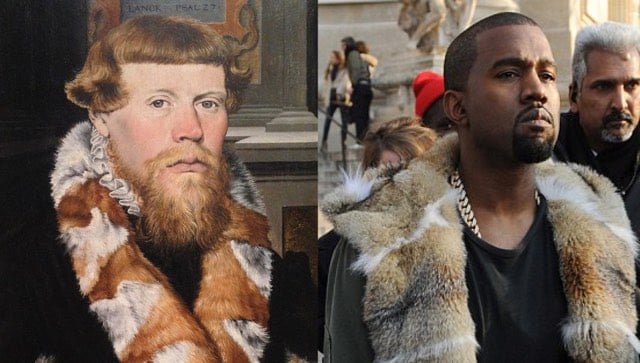
If, like me, you couldn’t get it together to make it to the Matisse cut-outs show at MoMA, the NY Times has you covered with an interactive look at the show.
Arthur Ganson is a kinetic sculptor who builds “Rube Goldberg machines with existential themes”. One of his works is called Machine with Concrete, which demonstrates the magic of gear ratios
According to a piece in Make, the input shaft spins at 200 rpm, which is reduced by gearing down to 1 revolution every 2 trillion years by the time you reach the gear on the end…which is so slow that even embedding the final gear in concrete doesn’t make any difference to the machine’s operation. (via interconnected)

Artist Aki Inomata builds fanciful new houses for hermit crabs.
Miniature windmills, churches, and even entire cities jut from the surface of her 3D-printed shells, which are modelled upon CT scans of abandoned crab shells and then recreated in transparent resin. Inomata then allows the homeless crabs to inspect the shelters at their leisure — she says “most hermit crabs don’t even glance at” them, but occasionally one of the creatures finds its dream real estate and settles in.
If you’ve ever noticed most ski trail maps look kinda the same, the reason is many of them have been painted by a single individual: James Niehues.
Each view is hand painted by brush and airbrush using opaque watercolor to capture the detail and variations of nature’s beauty. In many instances, distortions are necessary to bring everything into a single view. The trick is to do this without the viewer realizing that anything has been altered from the actual perspective.
Here’s a selection of his work:



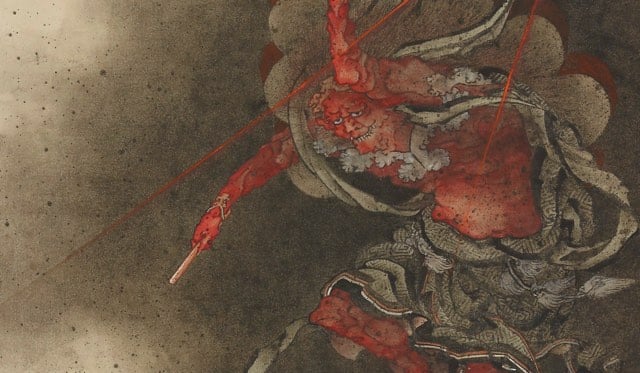

Over the holiday, the Smithsonian’s Freer|Sackler art galleries put more than 40,000 works of art online; that’s their entire collection available for high-resolution download. Here’s the announcement on their blog.
We’ve digitized our entire collection and today, we’re making it available to the public. That’s thousands of works now ready for you to download, modify, and share for noncommercial purposes. As Freer|Sackler Director Julian Raby said, “We strive to promote the love and study of Asian art, and the best way we can do so is to free our unmatched resources for inspiration, appreciation, academic study, and artistic creation.”
Great to see galleries and museums doing this sort of thing, e.g. the Met and all the institutions participating in The Commons at Flickr. (via the verge)
A project called Maximum Distance. Minimum Displacement. analyzed the lyrics of several popular rappers for geographical mentions and had an industrial robot draw each rapper’s lyrical journey through the world. At a glance, you can see how worldly (N***as in Paris) or locally oriented (Straight Outta Compton) each rapper is. Compare world-traveller Jay Z:

with Kendrick Lamar:
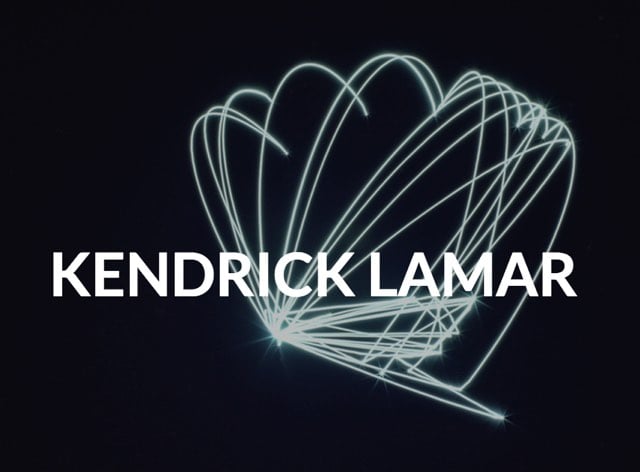
Kendrick Lamar’s analysis is culled from the lyrics of his underground & independent albums and is heavy with Compton references. Over the next few years it will be interesting to see how mainstream successes and personal experience change the travel of his lyrics.
Yarin Gal used an “inpainting” algorithm to extend the canvases of notable paintings. Like van Gogh’s Starry Night or Hokusai’s The Great Wave off Kanagawa:
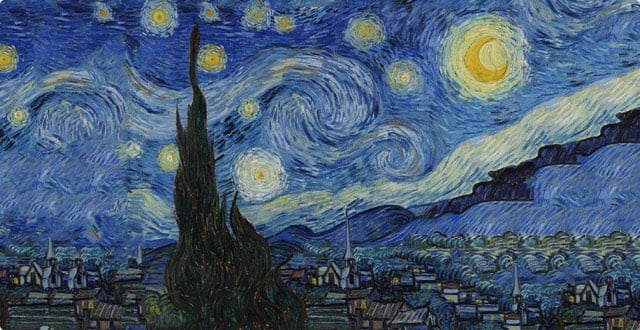
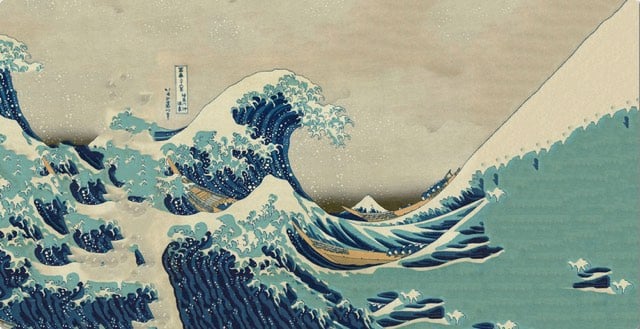
There’s a post on the Wolfram Alpha blog about how you can achieve similar effects using the Wolfram Language.
Wow, the art of making marbled paper, a short film from 1970. Charmingly British, just like the film about the Teddy Grays candy factory or the putter togetherer of scissors. Super cool how the inks are placed on a water bath, swirled expertly to make patterns, and then transferred to the paper.
Also of note: the segment on the conservation of old books starting at around 9:55…I never knew they took them apart like that to dunk the pages in water! Sadly, the Cockerell Bindery ceased operation in the late 1980s with the death of Sydney Cockerell and its contents were sold at auction. (thx, matt)

A shell found in the 1890s was recently found to have what scientists are calling the world’s oldest “abstract marking”, a 500,000-year-old etching made by Homo erectus, an extinct ancestor of modern humans.
Close inspection under the microscope suggested that the engraving was intentional. The weathering patterns of the grooves, each of which is about 1 centimetre long, show signs of significant ageing, and there are no gaps between turns, indicating that the maker paid attention to detail. He or she probably made the engraving on a fresh shell, and the newly made etching would have resembled white lines on a dark canvas, Joordens’ team notes. Sand grains still embedded in the shell were dated to around 500,000 years ago.
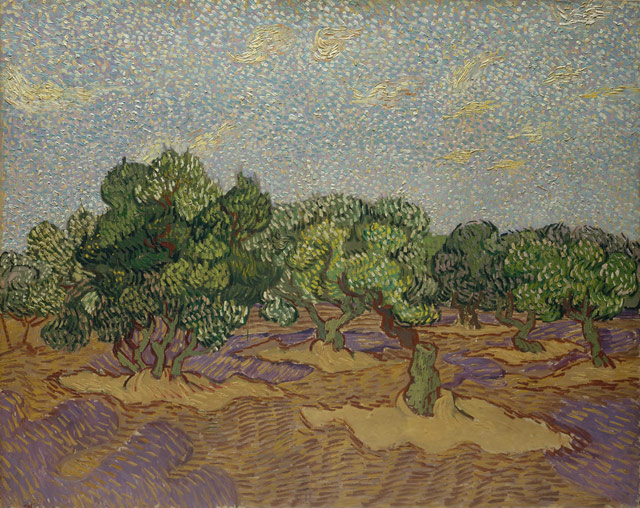
The International Exhibition of Modern Art held at the The 69th Regiment Armory in NYC in 1913 was the first large public exhibition of modern art in the US. It has become known simply as The Armory Show. Among the artists represented at the show were Paul Cézanne, Georges Braque, Georges Seurat, Vincent van Gogh, Auguste Rodin, Pablo Picasso, Wassily Kandinsky, Claude Monet, Marcel Duchamp, Henri Matisse, and Fernand Léger. So yeah, important show.
John Ptak noticed in a book he was reading that the sales total for the show was $44,148, which is something like $1,000,000 in today’s dollars. Of that total, two artists were responsible for almost a third of the total: Odilon Redon made $7000 and Cézanne made $6700. Duchamp sold four pieces for $972. It goes without saying that the ~1600 pieces exhibited at The Armory Show would fetch billions of dollars at auction now.
On the walk back from soccer practice the other day, my sharp-eyed seven-year-old son spotted something through the partially papered-up window of a Chelsea gallery. “Hey, Kara Walker!” he says.1 And sure enough:
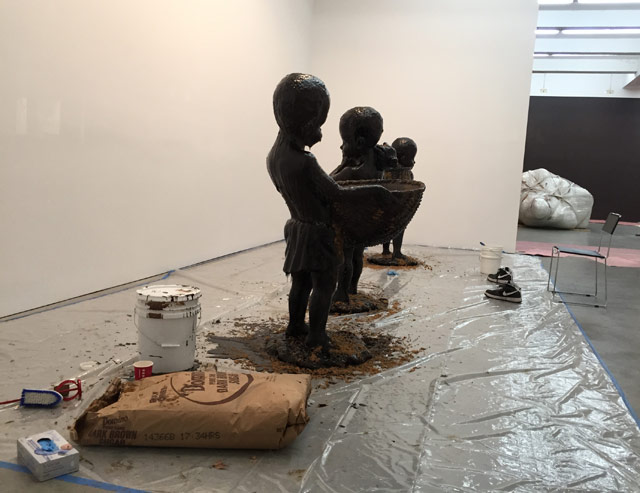
The gallery is Sikkema Jenkins on 22nd St and Walker’s show, Afterword, starts there tomorrow and runs through mid-January. The show is an extension of A Subtlety, Walker’s installation at the Domino Sugar Factory in Williamsburg over the summer. Several of the sugar statues and the left fist of the sugar sphinx from the Domino installation will be shown along with new video works and notes & sketches from the planning of A Subtlety. You can see some of the figures in the photo above (fashioned out of Domino Sugar, naturally) and I think that’s probably the fist in the background on the right, wrapped in plastic.
I know. So insufferable, right? But I like that Kara Walker is on a similar level to Harry Potter, Minecraft, and Star Wars in my kid’s brain. That installation left an impression on him, and I’m glad we were able to see it together.↩
Klaus Kemp is one of the last great practitioners of arranging diatoms, tiny single celled algae. The art is only visible under microscopic magnification.
More information about Kemp and his images is available on his web site. (via waxy)
Everyone knows graffiti artist extraordinaire Banksy is a man. What this post presupposes is, maybe she’s a woman?
But what Banksy Does New York makes plain is that the artist known as Banksy is someone with a background in the art world. That someone is working with a committee of people to execute works that range in scale from simple stencil graffiti to elaborate theatrical conceits. The documentary shows that Banksy has a different understanding of the street than the artists, street-writers, and art dealers who steal Banksy’s shine by “spot-jocking” or straight-up pilfering her work-swagger-jackers who are invariably men in Banksy Does New York.
All of which serves as evidence against the flimsy theory that Banksy is a man.
Or maybe Banksy’s like the Dread Pirate Roberts?
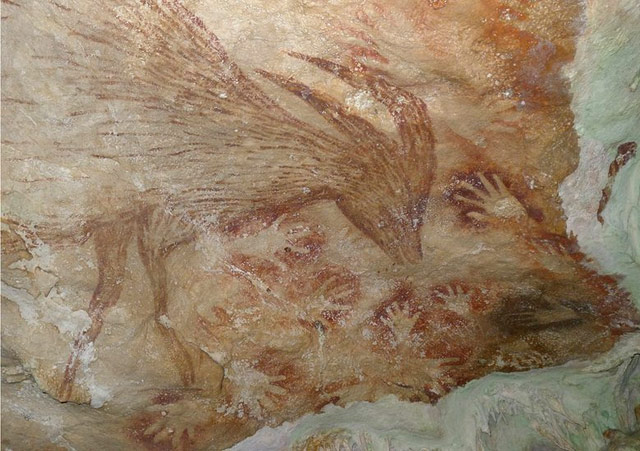
Paintings in a cave in Indonesia have been dated to 40,000 years ago, as old or older than any paintings found in Europe.
For decades, the only evidence of ancient cave art was in Spain and southern France. It led some to believe that the creative explosion that led to the art and science we know today began in Europe.
But the discovery of paintings of a similar age in Indonesia shatters this view, according to Prof Chris Stringer of the Natural History Museum in London.
“It is a really important find; it enables us to get away from this Euro-centric view of a creative explosion that was special to Europe and did not develop in other parts of the world until much later,” he said.
The discovery of 40,000-year-old cave paintings at opposite ends of the globe suggests that the ability to create representational art had its origins further back in time in Africa, before modern humans spread across the rest of the world.
“That’s kind of my gut feeling,” says Prof Stringer. “The basis for this art was there 60,000 years ago; it may even have been there in Africa before 60,000 years ago and it spread with modern humans”.
Man, I don’t know what to call this style of painting (rectanglism?) but Adam Lister does these cool pseudo-bitmappy paintings of famous artworks and notable pop cultural icons.



New work from Olafur Eliasson: he installed a riverbed in the Louisiana Museum of Modern Art in Denmark.
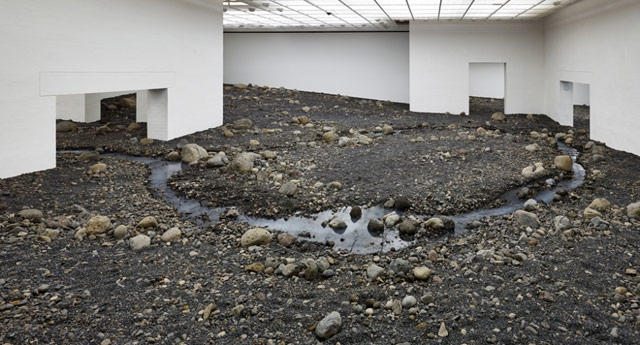
Stay Connected